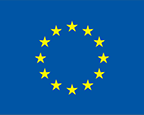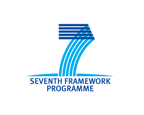Policy Implications
Avoiding future adverse effects on human health from exposure to contaminants requires an overall strategy that integrates policies and measures to reduce use and releases of contaminants, monitoring of environmental levels and human exposure, education and risk communication, and where necessary food consumption advice to critical groups.
ArcRisk objectives include providing input for the development of strategies on how best to adapt to and prevent adverse health effects related to climate-mediated changes in exposure to chemical contaminants in human populations in the Arctic and in Europe. The research performed in the project has illustrated the complexity of contaminant cycling and effects and also the limitations in our capability to predict how climate change may affect these processes. Policy advice related to reducing future exposure and effects cannot therefore be formulated in a single straightforward statement but rather comprises a series of recommended actions that need to be incorporated in an overarching plan (strategy) to meet this situation.
- Policies, restrictions and technical measures to reduce emissions of contaminants. Long-term, comprehensive reductions in human exposure to harmful environmental contaminants can only be achieved by minimizing their use and eliminating as far as possible releases to the environment. For some contaminants, climate change may increase exposure but climate change mitigation alone will not remove risks associated with chemical contaminants.
- International collaboration. Given the vast amount of chemicals used in society and the number of chemical compounds involved, the task of identifying those chemicals that pose the greatest risks for human and environmental health is enormous and requires international collaboration. In addition, risk reduction measures must be adapted to the specific use and emission patterns associated with different groups of chemicals. The potential for long-range transport of many harmful contaminants means that international agreements such as the Stockholm Convention, the Convention on Long-Range Transboundary Air Pollution, and the Minamata Convention have a key role to play. In addition, potential synergies between existing international policies and agreements concerned with monitoring, risk assessment, and mitigation measures should be exploited. For legacy substances that are already banned or restricted, additional measures to reduce environmental dispersion from remaining sources, contaminated sites, landfills, buildings, etc., may be warranted.
- Access to information. Information on emissions, use and life-cycle of environmental contaminants and potential contaminants is largely lacking and improved access to such data is necessary to allow risk assessment and prioritization of measures.
- Monitoring and assessment. Monitoring of contaminants in the environment, foodstuffs and humans provides essential information to follow-up the effectiveness of action taken, to identify new threats and to develop the basis for guidance aimed at reducing exposure. Monitoring in combination with modelling and assessment can also provide knowledge on contaminant pathways in the environment which can be used for predicting future changes and identifying measures to be taken. Monitoring aimed at environmental compartments that are expected to be affected by climate change (snow, ice, glaciers) and that may increase availability of contaminants for uptake in food webs is especially important.
- Advisories on human consumption of fish, seafood and mammals. Many contaminants are persistent and continue to contaminate the environment for a long time after their sources have been reduced or eliminated. Food consumption guidelines and advisories can provide effective short-term solutions to minimize human exposure, in particular for critical groups. However, such advisories must be developed in close cooperation with local health professionals and the target groups themselves. They should be developed taking account of both risks and benefits of consumption of particular foods, including indirect benefits (such as cultural benefits). Risk communication is not a simple task. It will be necessary to update and complement existing food consumption guidance as knowledge about the effects of chemical contaminants and the associated impacts of climate change grows.





















